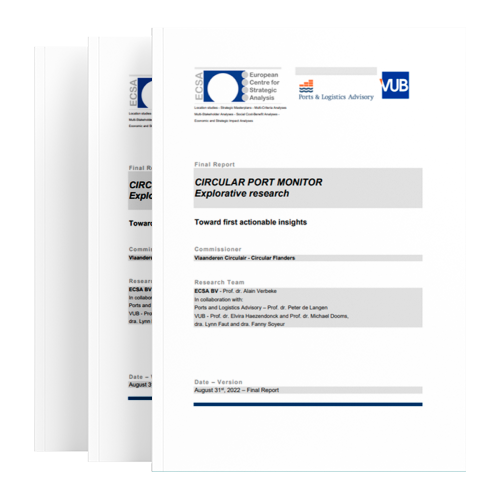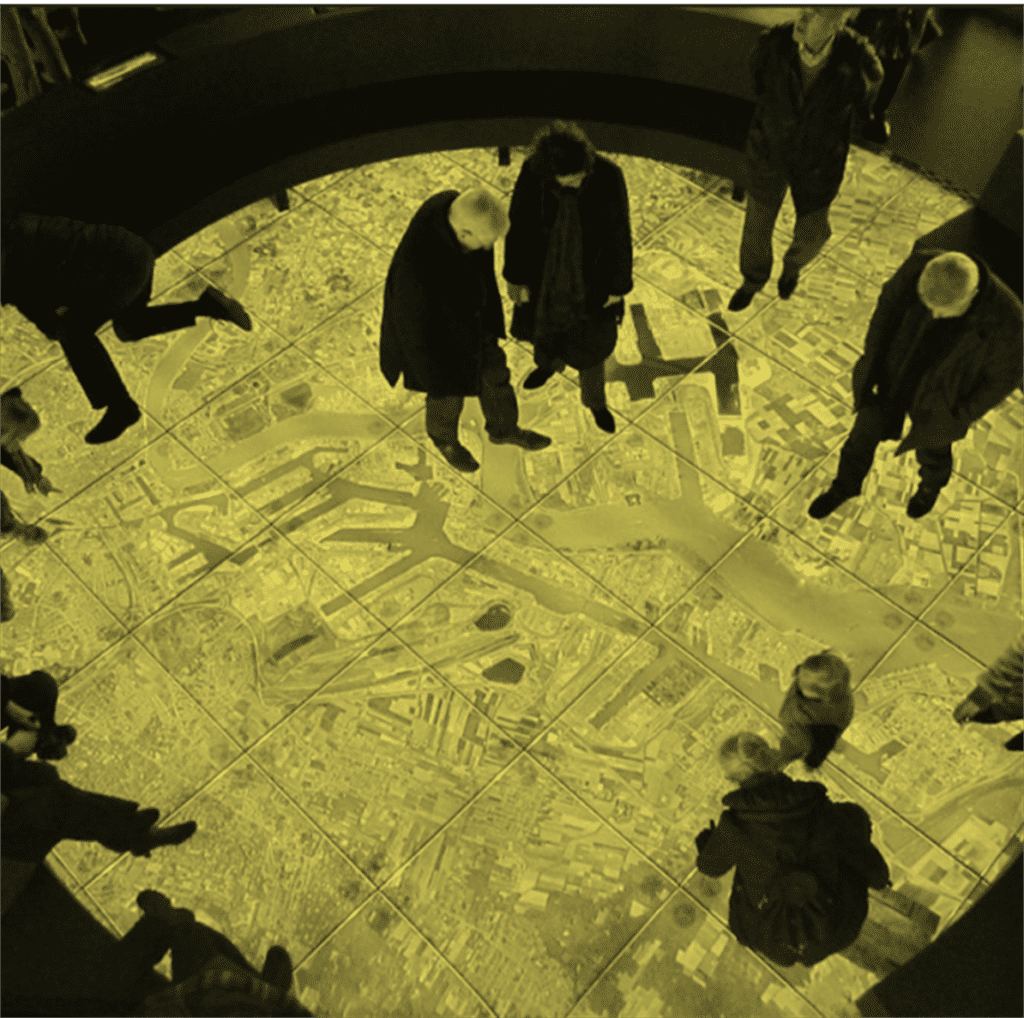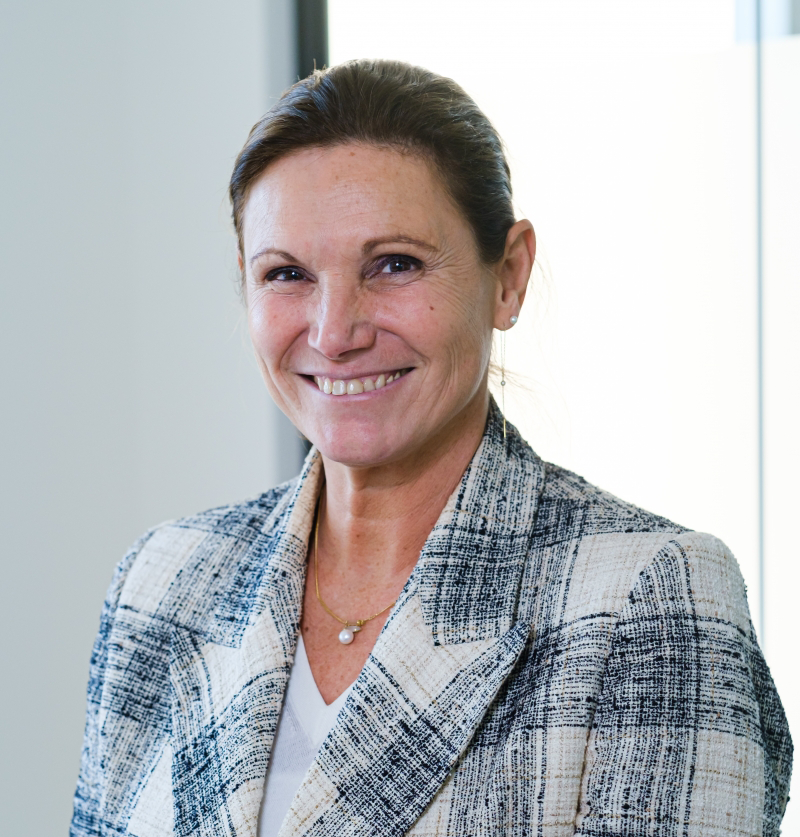The current momentum around circular economy monitoring and the evolving role of Port Authorities (PAs) in sustainability reporting is an excellent opportunity to clarify the direction in which this should be integrated into port performance systems. This is the time to establish the right framework and context to evolve towards a mature and integrated circular economy monitoring system in ports. This TRACK focuses not only on clarifying the challenge or simply gaining insights, but also on making these insights actionable.
Initial set of indicators
In exploring the monitoring of the circular economy in ports, it became clear that, in addition to useful insights, there is an immediate need for a reasoned selection and further development of a first set of indicators.
Not a circular indicator or index that encompasses everything in one number, nor a multitude of complex indicators, nor the ultimate set of indicators for the coming decades, but above all a set of indicators to get started.
Indicators
Discovering the first set of indicators
During the exploration of monitoring the circular economy in ports, it became clear that in addition to actionable insights, there was an immediate need to develop a basic set of indicators. Not a circular indicator or index that encompasses everything in one number, nor a multitude of complex indicators, nor the ultimate set of indicators for the coming decades, but above all an initial set of indicators to get started.
Twelve indicators for immediate use
Discover the initial set of 12 indicators based on information that is relatively easy to obtain and meaningful to share. The indicators have been selected to be relevant to Port Management Bodies (PMBs) in the context of the circular economy objectives for ports.
The role of PMBs as cluster managers has been highlighted, but proper monitoring of the circular transition in ports is a shared responsibility. By supporting PMBs and port companies with tools, insights and a certain level of data commitment, they will be able to take up this necessary challenge.
Each indicator is presented below as a summary of its key elements. This includes: a definition, method and unit of measurement, data sources, some (examples) of alignment with strategic goals, level of results and difficulty, and its limitations.
The numbers (1, 2, 3…) do not represent a particular order, ranking or importance, but are used for (cross-)referencing and clustering. Indicators can be selected according to feasibility, result level and topics.
Some indicators in this first set are more feasible than others. Challenges and limitations are stated in full transparency. Practitioners should be aware of new developments and recognise that practice and experience over time should lead to necessary feedback loops and adjustments. Stay tuned for updates!
Performing the indicators starts now
No matter where you start. Just start, that’s the most important thing. We are committed to disseminating the findings of the research and proactively informing port management bodies, port associations, stakeholder platforms and research networks about further developments in Flanders and Europe. This will not only unlock a potential knowledge community around circular economy and ports, but also create the opportunity for communities of practice to stimulate the adoption of circular economy indicators in different European ports.
Practitioners should be aware of new developments, solve problems on the ground and realise that practice and experience should lead to necessary feedback loops over time.
Aware of new developments
First, the research sets the scene and provides a solid basis for monitoring the circular economy in port areas. New developments, as is inherent in any transition, will need to be incorporated at a later stage, including: new or higher ambitions of ports/stakeholders in relation to the circular economy, and therefore indicators that capture these new ambitions, as well as new policy efforts, regional drivers and/or resources available to make this happen.
Solving issues on the ground
Secondly, a first try-out in an existing seaport, as presented in this study, revealed several challenges related to monitoring applications. These practical implications are explored and acknowledged, and follow-up research is needed to solve local problems and to get a monitoring system or set of indicators widely accepted and applied.
Feedback loops and learning
Third, the research process may lead to necessary feedback loops. Some findings from later stages may have an impact on choices made in earlier stages of the research process and may require possible adjustments through learning. This initial exploratory research will not cover dynamic circular ambitions, solutions to implementation problems or feedback loops, but it will express the need to follow up on these findings in the (near) future.

Interested in the exploratory research?
The exploration is recorded in the form of a research notebook in which all the steps and findings of the exploration are carefully documented.
As such, it reads differently than a publication for a wide audience. Still, we want to be as transparent as possible in sharing this information. Therefore everything is open access under the CC BY-NC-ND license. You can request both the final report and the appendices by leaving your personal information.


